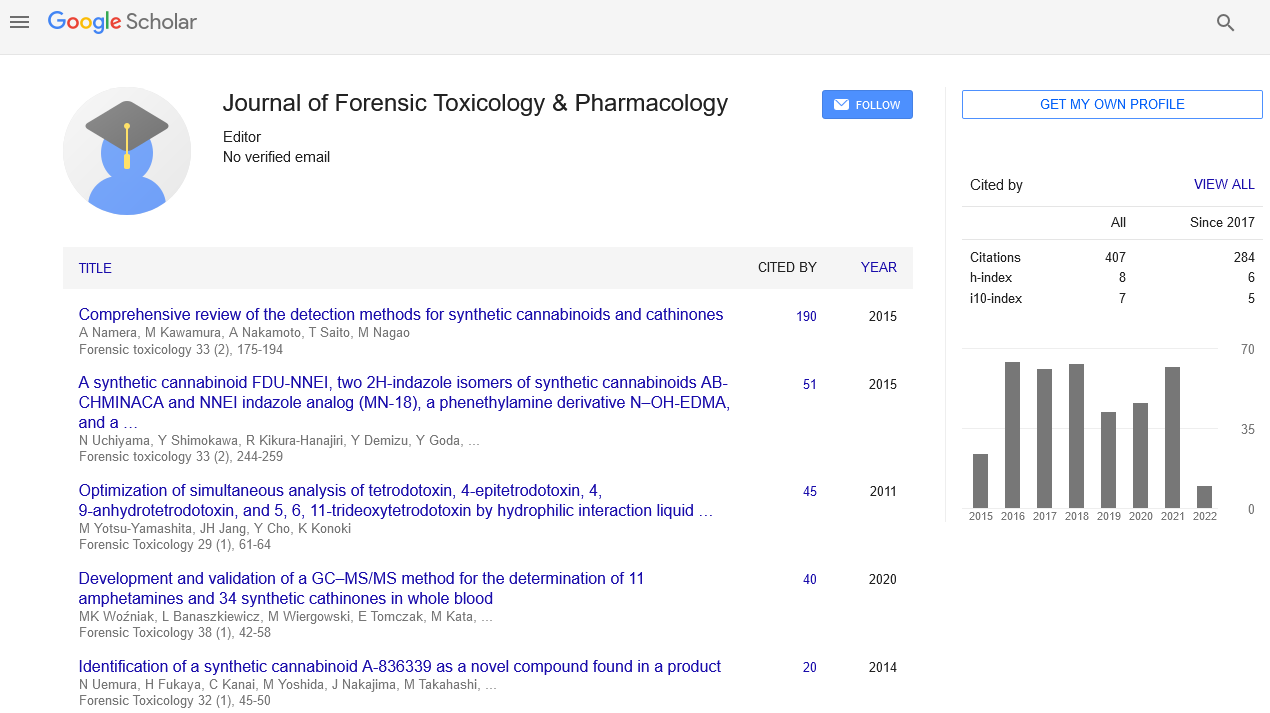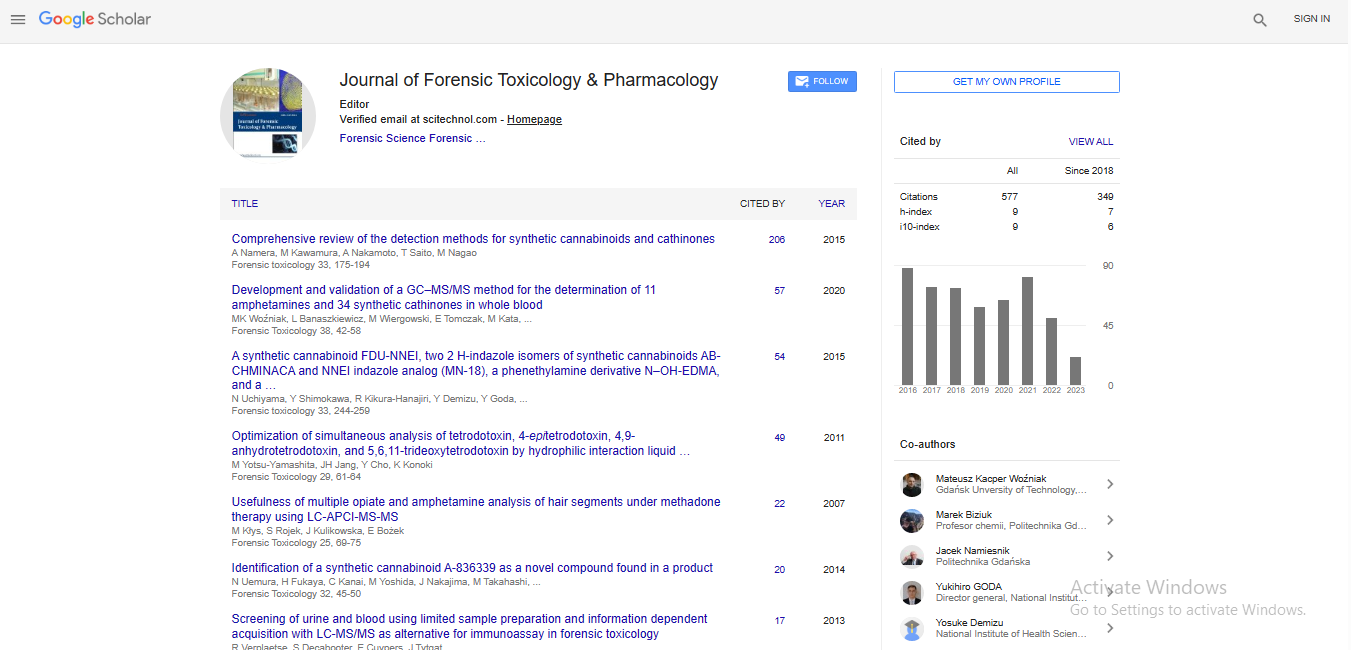Exoxome and exosomal miRNA as predictive radiotherapy biomarkers and therapeutic targets
Inhye Jung, Jewon Ryu, Eunyoung Park, Yuna Kim and Sang-Wook Lee
University of Ulsan College of Medicine, Korea
: J Forensic Toxicol Pharmacol
Abstract
Background: Injury of normal tissues during Radio-therapy (RT) is a contemporary clinical problem. Despite in greatly developing RT techniques, translation of RT into effective personalized clinical methods is hindered by the absences of reliable biomarkers. Sensitive and predictive biomarkers for radio-therapy are needed in order to optimize cancer therapies. Unirradiated tissues effect as a result of signaling received from nearby irradiated cells, bystander effects, which lead to damaged normal tissues. Exosomes or various vesicles are released by tumor and normal tissues to nearby and distinct environments. Exosome between radiationdamaged cells with their environments may play a role in intensified the damage. RESULTS: We investigated whether the exosome from cancer and normal cells exposed to radiation may change in size or in number than normal conditioned cells. Dynamic light scattering (DLS) analysis showed that the size and number of exosomes from 4, 8Gy RT-exposed cells were critical increased with radiation-dose dependently. Immunoblotting showed that inflammatory CRP expression in normal condition cells was increased the effects of only exosome from RT-exposed cells. MicroRNA expression is frequently dysregulated in damaged normal tissues and may be reflected by distinct exosomal miRNA profiles isolated from RT-exposed tissues. Here, we analyzed the exosomal miRNA of 4, 8Gy RT-exposed A549 lung cancer and WI38 epidermal normal cells. The expression of their exosomal miRNA was showed different profiles. Conclusion: We can conclude that characterization of exosome and exosomal miRNA are very important steps towards better understanding of predictive or estimated treatment effect in cancer patient with radio-therapy.
Biography
E-mail: ilnick@naver.com
 Spanish
Spanish  Chinese
Chinese  Russian
Russian  German
German  French
French  Japanese
Japanese  Portuguese
Portuguese  Hindi
Hindi 
